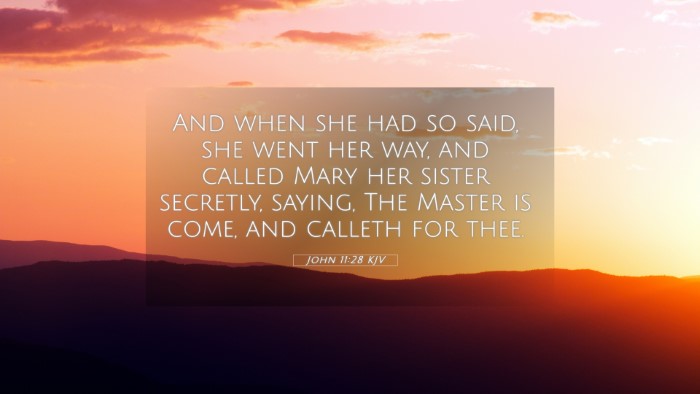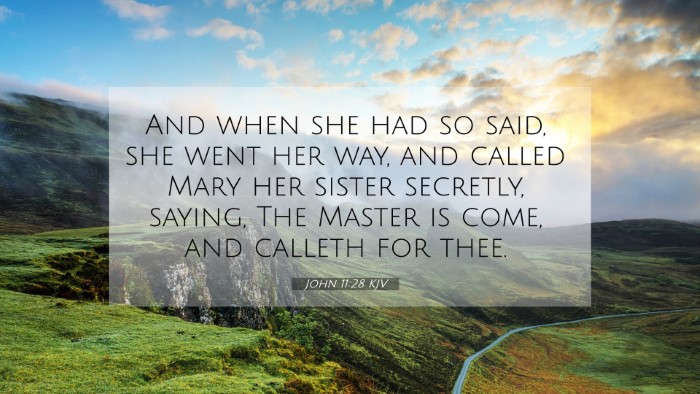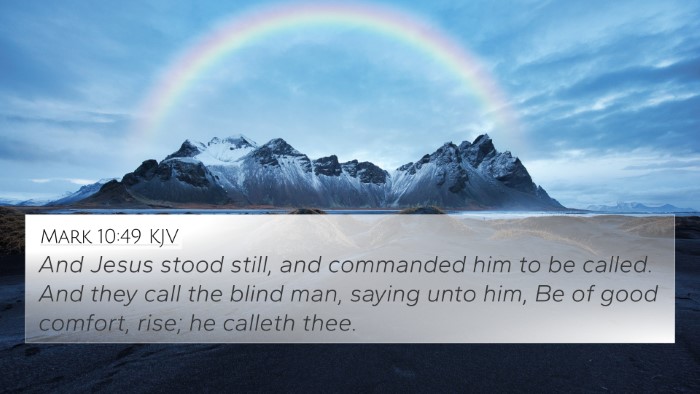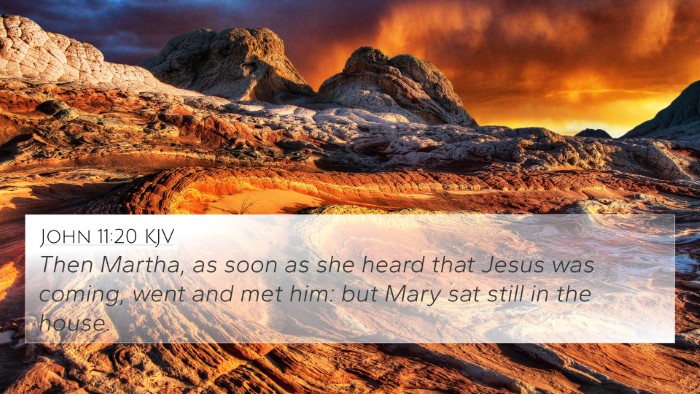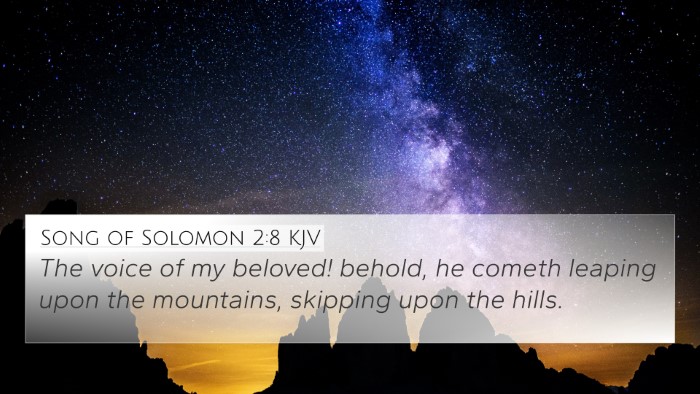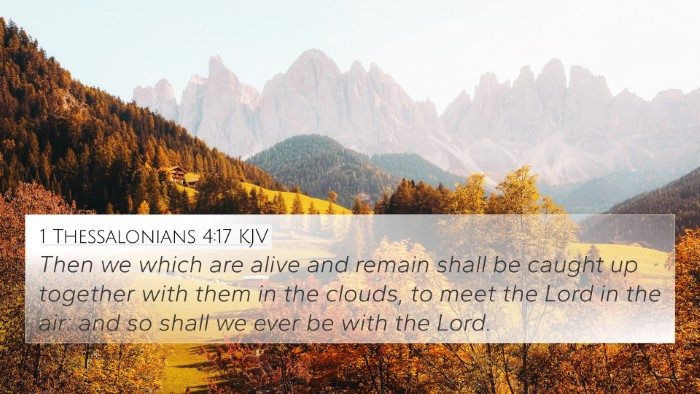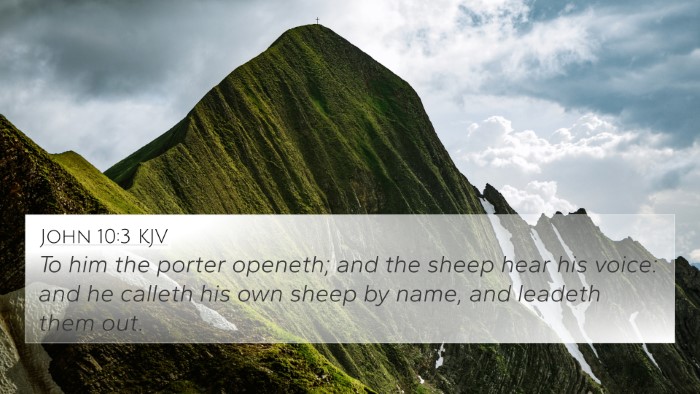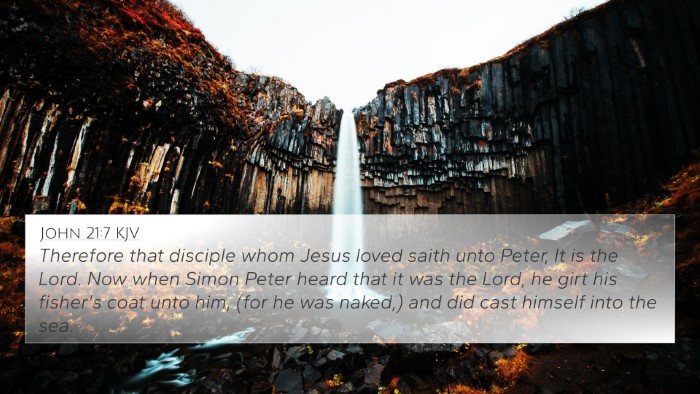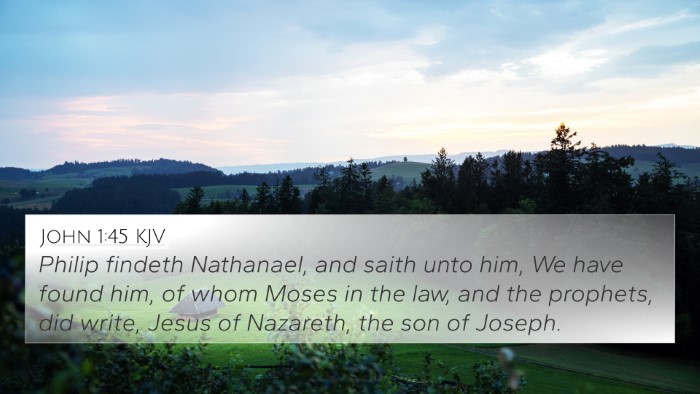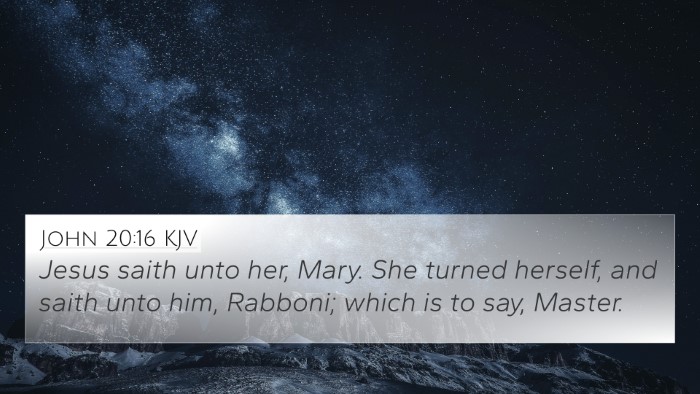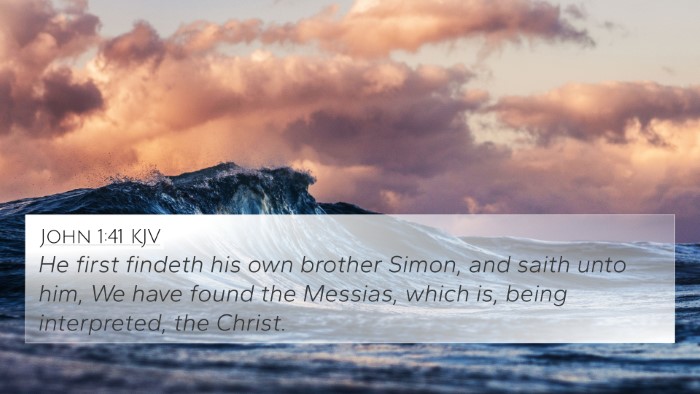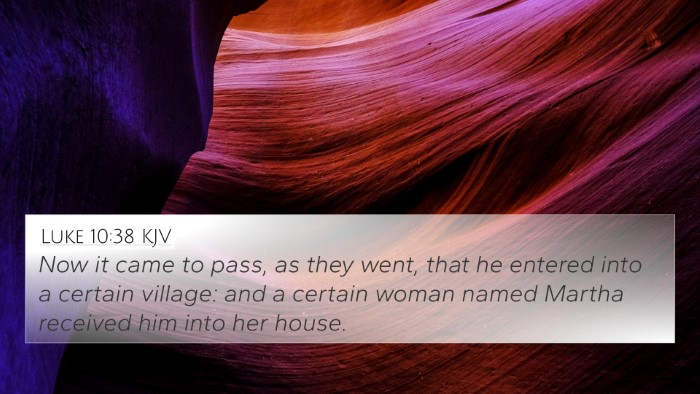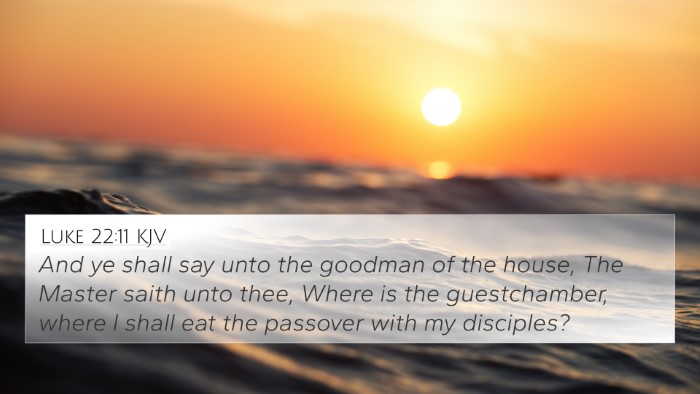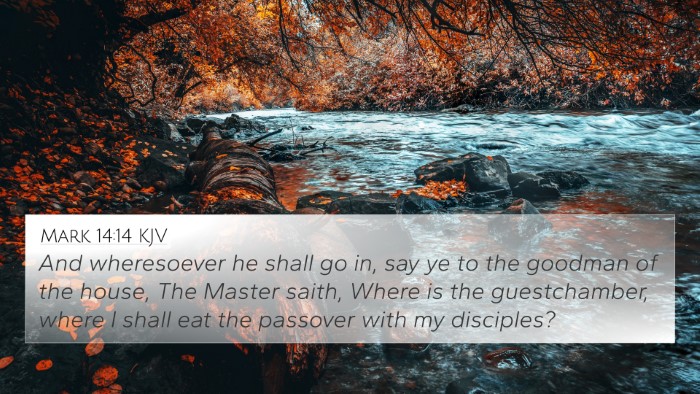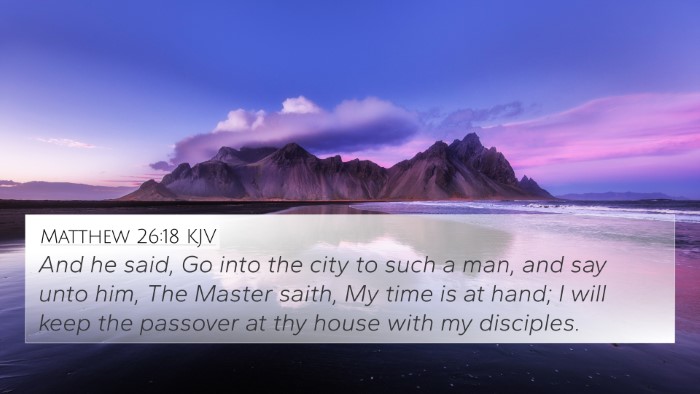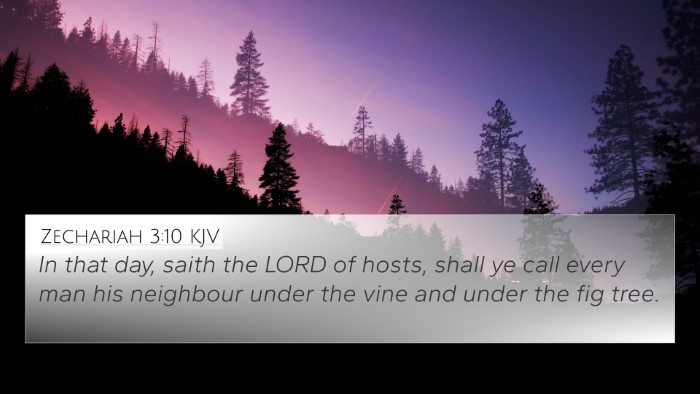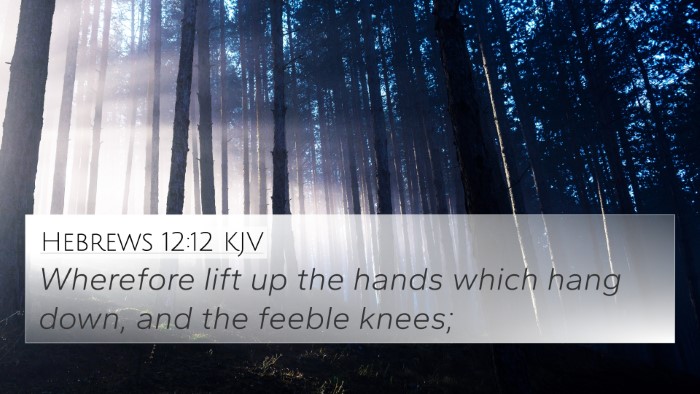Understanding John 11:28
John 11:28 reads, "And when she had so said, she went her way, and called Mary her sister secretly, saying, The Master is come, and calleth for thee." This verse is pivotal in the story of Lazarus, highlighting both the human emotion of grief and the divine authority of Jesus.
Theme Analysis
The verse encapsulates several key themes relevant to the Christian faith, including hope, the power of Christ, and the intimate relationship between Jesus and His followers.
Key Themes:
- The Response to Suffering: The call to Mary signifies the need for comfort in times of grief.
- Divine Invitation: Jesus's summoning emphasizes His desire for personal relationship with believers.
- The Role of Faith: Mary’s eventual response and interaction reflect a deeper faith journey.
Commentary Insights
Insights from noted biblical scholars shed light on the depth of this verse.
Matthew Henry:
Matthew Henry emphasizes the significance of Jesus calling for Mary. He notes that the Master's call is both an invitation to healing and a reflection of His compassionate nature. This moment illustrates how Jesus actively seeks out individuals, showcasing His grace and personal engagement with humanity.
Albert Barnes:
Barnes adds that Mary's response to this call is indicative of her faith. She comes when called, which signifies trust in Jesus’s word. Barnes draws connections between this and other instances where Jesus calls individuals to follow Him, emphasizing that the call is a precursor to miraculous works.
Adam Clarke:
Clarke points out the duality of Martha's grief and her hope upon realizing Jesus's presence. He explains that the act of calling Mary was strategic, aiming to draw her into a encounter with Jesus that could transform her sorrow into joy and faith. Clarke also notes the significance of secrecy in calling Mary, suggesting a personal touch in the ministry of Jesus.
Bible Verse Cross-References
Understanding John 11:28 is enhanced through the following cross-references:
- Luke 10:38-42: The story of Martha and Mary showcases the relationship dynamics and the call to prioritize Jesus amidst distractions.
- John 11:1-3: Provides context on Lazarus's illness and sets the stage for the coming miracle.
- John 11:32-33: Mary’s emotional response when she arrives at Jesus, highlighting the depth of her sorrow.
- John 14:1-3: The assurance that Jesus offers to all who believe in Him, linking together the themes of comfort and hope.
- John 10:27: Jesus as the Good Shepherd who knows His sheep and calls them by name, echoing His personal touch in the lives of believers.
- Matthew 11:28-30: Jesus invites all who labor and are heavy laden to come to Him, reinforcing His role as the source of rest and peace.
- Revelation 3:20: The call of Jesus to open the door of one's heart, indicating His persistent reaching out to individuals.
Inter-Biblical Dialogue
This verse engages in a dialogue with numerous scripture references, reinforcing the interconnection of biblical themes and characters.
Connecting the Old and New Testaments
John 11:28 can be linked to Old Testament themes of mourning and divine intervention, particularly:
- Psalm 30:5: "Weeping may endure for a night, but joy comes in the morning."
- Isaiah 61:1-3: Proclamation of good news to the brokenhearted, emphasizing hope and restoration.
Taking Action
For those looking to pursue deeper understanding of biblical texts, consider using Bible Cross-reference Tools such as:
- Bible concordances for thematic studies.
- Bible cross-reference guides for various books.
- Reference resources for sermon preparation.
Conclusion
John 11:28 serves as a bridge connecting faith and personal relationship with Christ. Its implications stretch across various biblical themes and encourage believers to trust in Jesus as the source of hope and healing amidst trials.

